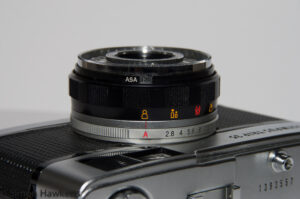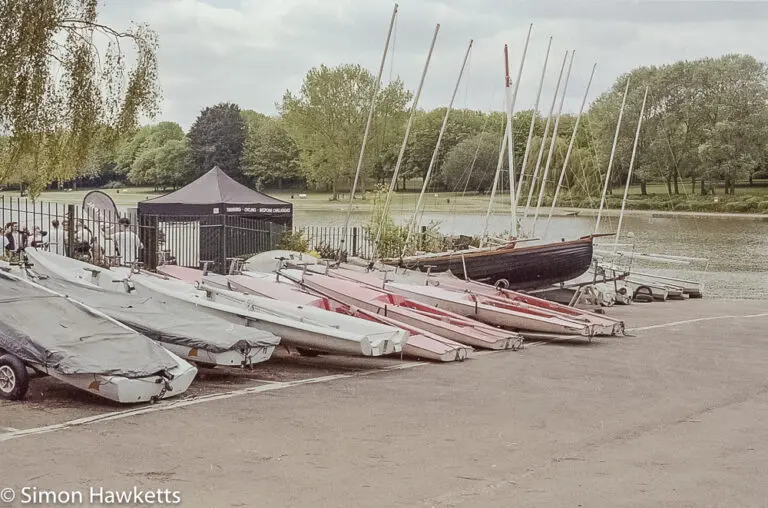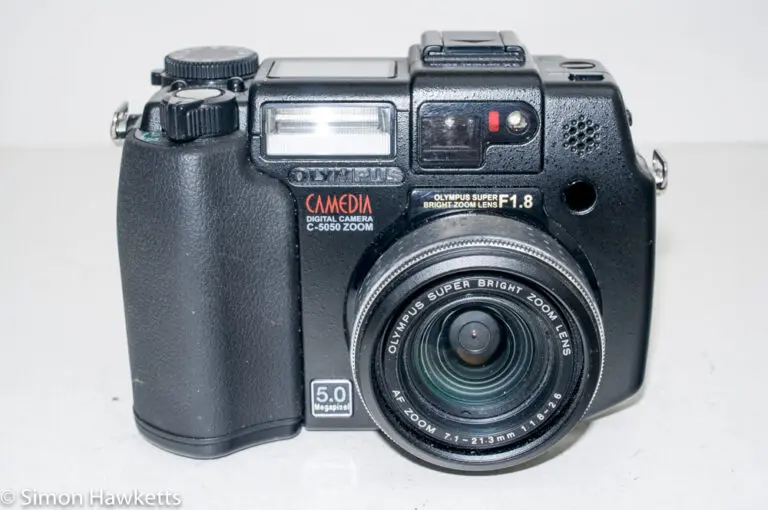The Super Olympus Trip 35 camera
This is a review of the latest addition to my camera collection and a super little point and shoot camera, the Olympus Trip 35.
My Olympus Trip 35 Camera
I have been looking forward to receiving this camera since I bought it on eBay a few days ago for £12.50. It is an iconic camera from the 1970s which I remember wanting to own when they were first introduced, but at the time couldn’t afford to buy one.
The first thing which struck me when I unwrapped it from the packaging yesterday is how small it is. Considering this is a full frame camera, it’s tiny ! The image below shows it in comparison to a Canon S95 digital compact, and the Olympus is only a bit bigger, although the frame size is massively bigger.
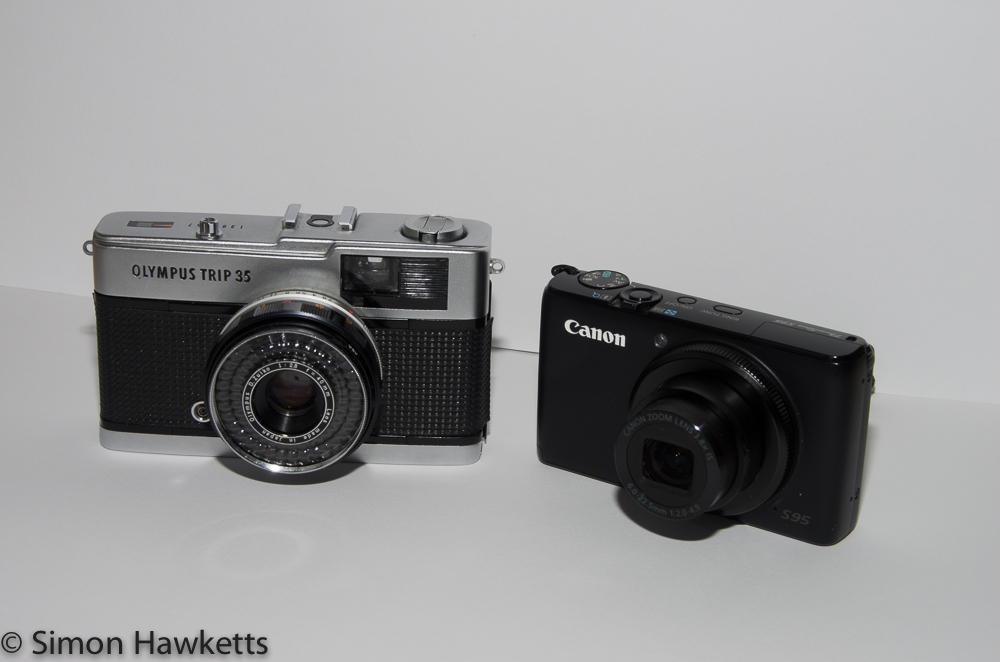
The Olympus Trip 35 cameras are quite easy to date – first, there is a clue in the colour of the shutter release button. Early cameras had a chrome button, later cameras had a black plastic shutter button. This camera has a chrome button, indicating an early example.
There is another even easier way to date the camera however; If you remove the film pressure plate there is a code on the back which includes the year and month of manufacture! Mine has a 3 & 9 indicating September 1973. So, just coming up to nearly 50 years old.
There seem to be a few issues with my copy of the camera, the main issue being that when I first received it, the aperture was stuck.
There is a way of easily telling if one of these cameras is working. Set the exposure control to automatic and cover the photocell round the lens. If you then try to take a picture, you should find that the shutter won’t fire, and you get a red marker in the viewfinder. This is to make sure that you don’t waste exposures when the light is too low.
When I tried this procedure initially, the camera did fire the shutter and the aperture was stuck at f/22. However, after a few turns of the aperture ring and further attempts, the aperture started to work, and the exposure system now seems to be correct.
I think the aperture blades have been coated with a thin coat of oil during the years, which has stuck the blades together and stops the aperture from working properly. My recent activity with the camera has dispersed the oil, but I suspect that the camera will need to be dismantled and properly cleaned at some point if it’s to be regularly used.
The other things which need attention are the light seal at the hinge of the film door which is completely gone; the leatherette covering which is starting to peel slightly, and most worrying, the film guides which seem pitted.
It may be that this camera needs to become a donor for parts for another (I have a few more on my eBay watch list).
Pictures of the Olympus Trip 35
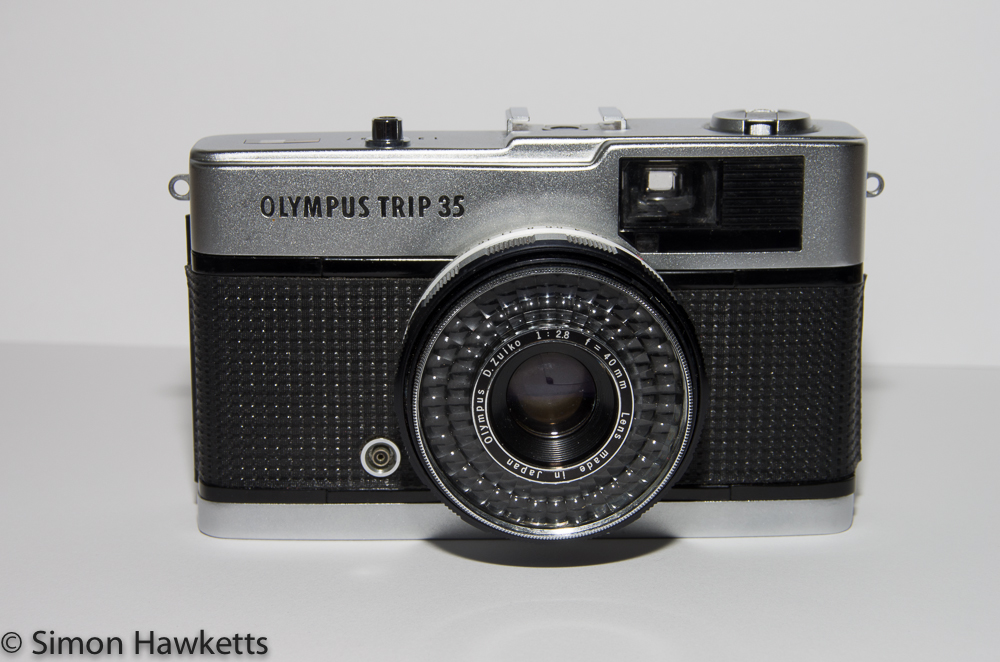
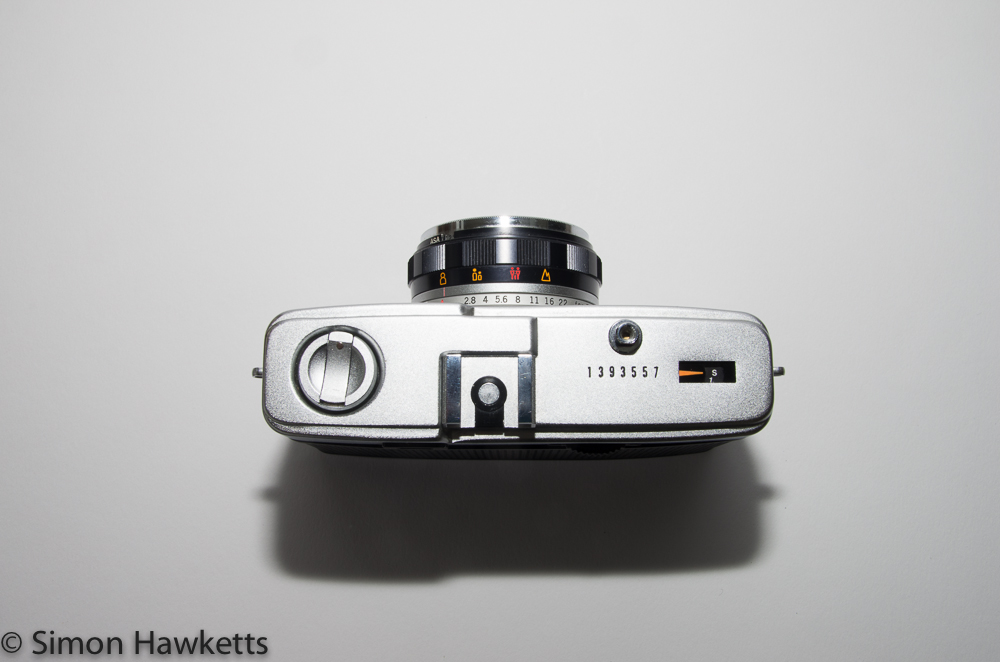
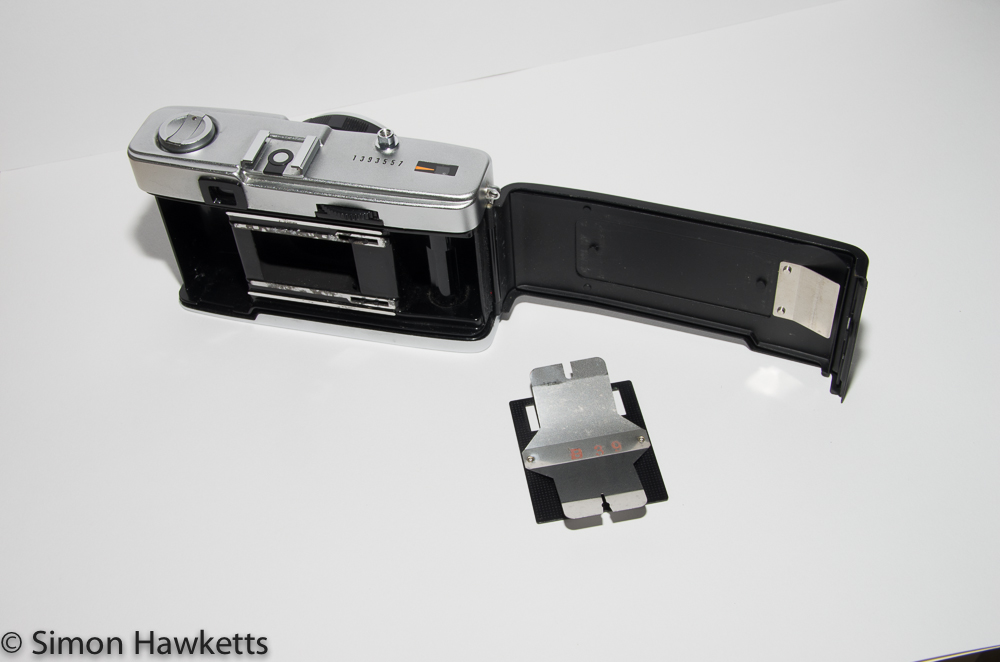

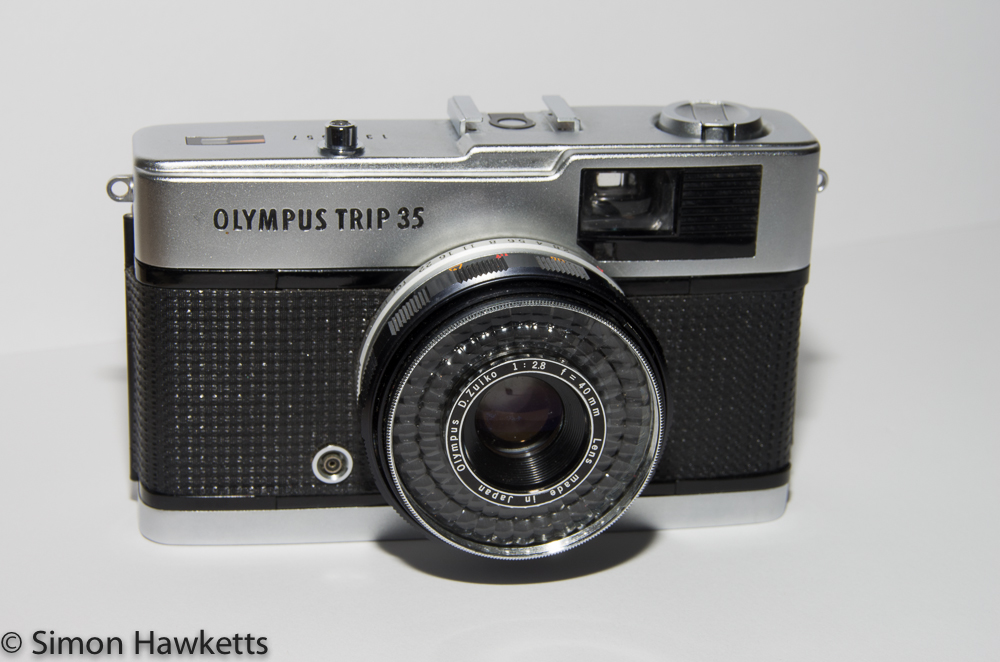
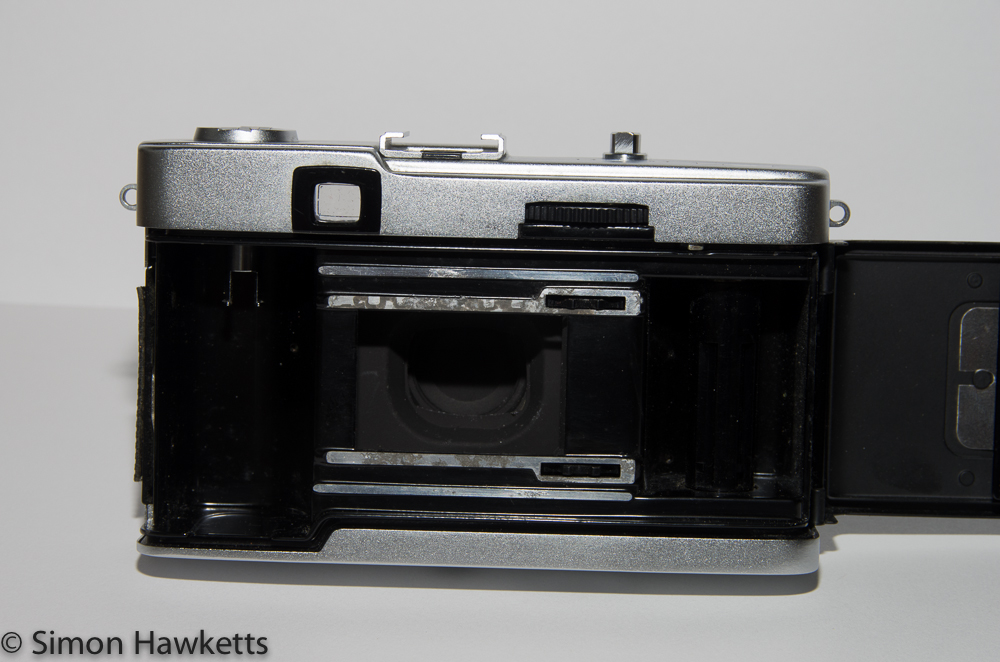
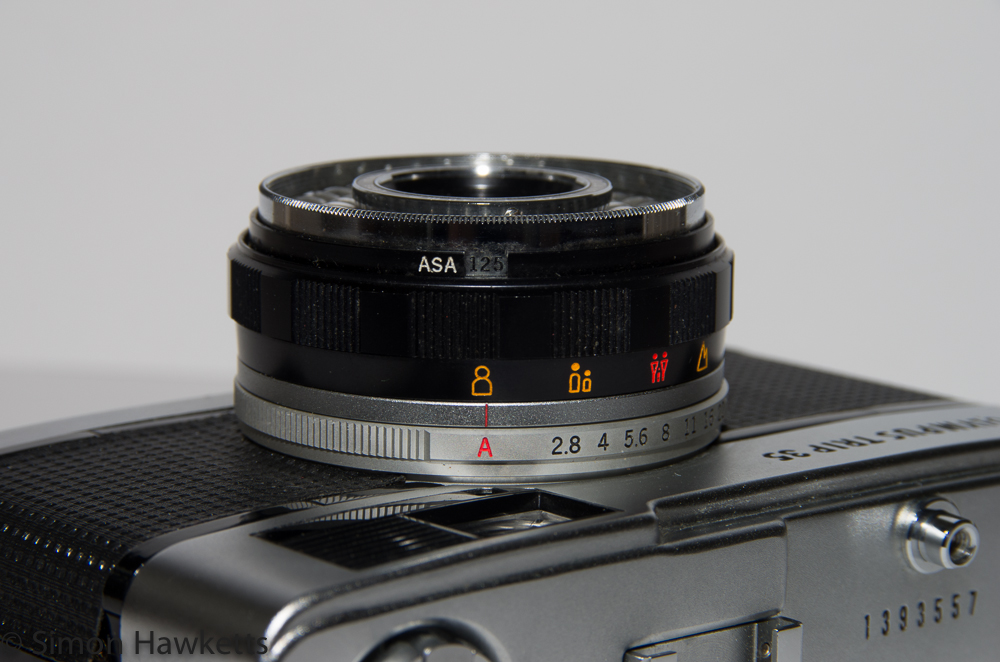
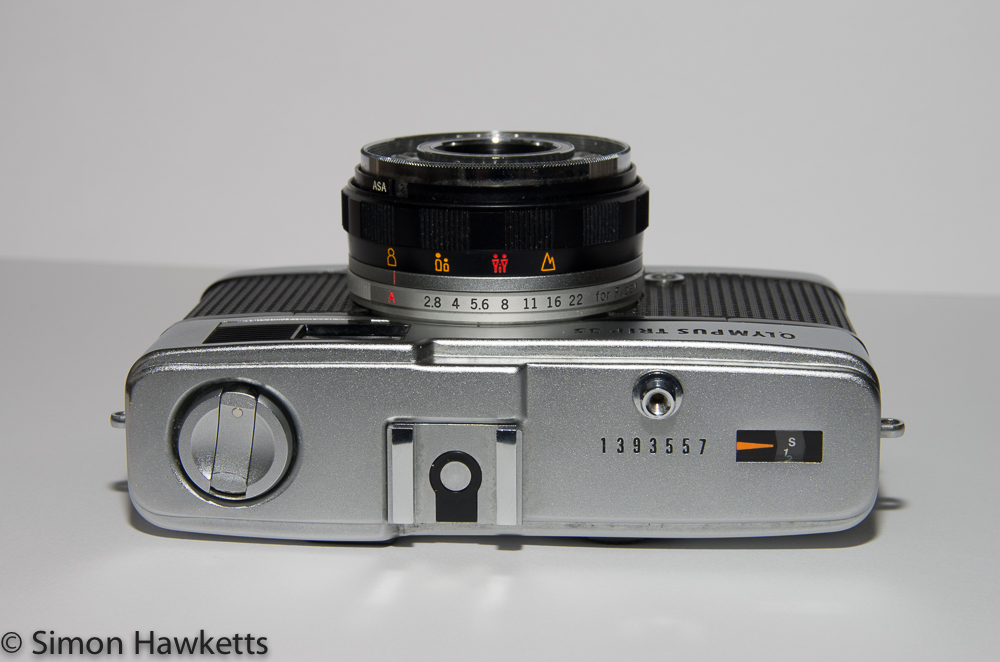
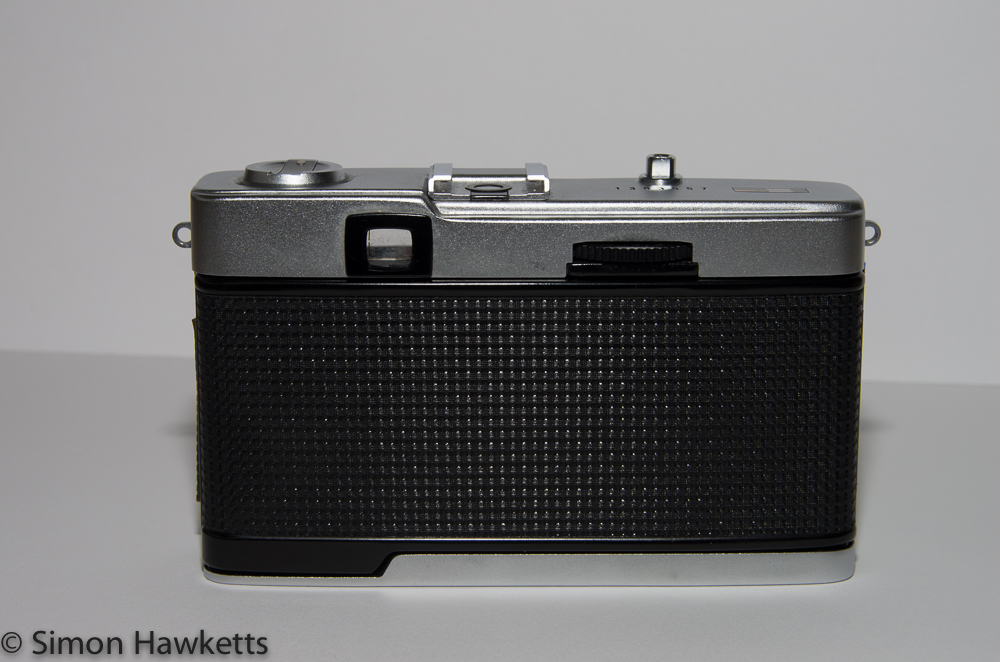

Olympus Trip 35 Camera Description
This is a 35 mm Point and Shoot automatic camera. There are a limited number of options available to the user – simply set the exposure to A – automatic, and set the focus to one of 4 different focus zones, and you are good to go. If there isn’t enough light, the shutter won’t fire, and you switch to flash mode. In flash mode you can set the aperture between f/2.8 and f/22 which you would read off the back of whichever flash gun you attach (there is no built-in flash).
The lens fitted to the camera is a 40 mm f/2.8 Zuiko coated lens, which is reputed to be extremely sharp. 40 mm will give a slightly wide angle view compared to the normal 50 mm standard lens used with 35 mm cameras.
There is an ISO setting ring at the front of the lens which has the range 25 – 400 ISO which, although a bit limited, covered all the normal film speeds available at the time the camera was made.
The light meter is fitted around the front of the lens which means it automatically compensates for any filters fitted, and stops the camera firing the shutter if a lens cap is fitted. The camera exposure system is driven from this light cell and requires no other battery.
The viewfinder is quite bright and has a neat little extra view at the bottom of the window which shows the focus zone and exposure setting the camera is set to, so you can see all you need to see in the view finder.
All in all, this is an incredibly neat and attractive small point and shoot camera. I’m looking forward to getting a film in this and seeing what sort of results I get.
Olympus Trip Specifications
- Olympus Trip 35 mm point and shoot camera
- Fully automatic operation
- 40 mm Zuiko lens
- Aperture range f/2.8 to f/22
- Shutter speeds 1/40 sec & 1/200 sec
- Zone focusing my symbols
- Light cell fitted around the lens opening
- Film speeds 25 ASA to 400 ASA
- The manual for this camera is available on-line here.
- The pictures from the first film I put through this camera are here.
Note: This article was reviewed and updated in July 2022
Discover more from Everything Vintage
Subscribe to get the latest posts sent to your email.

